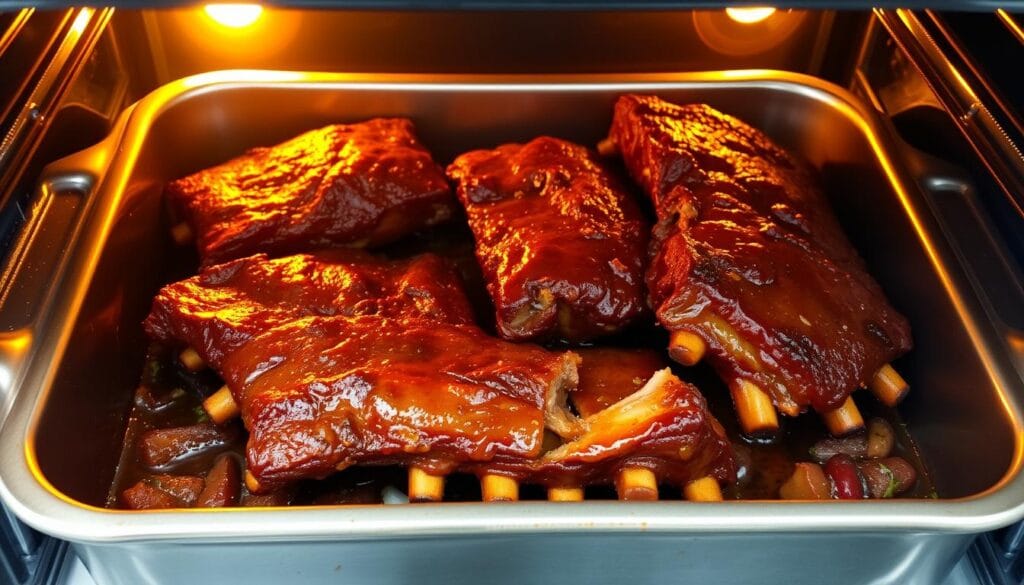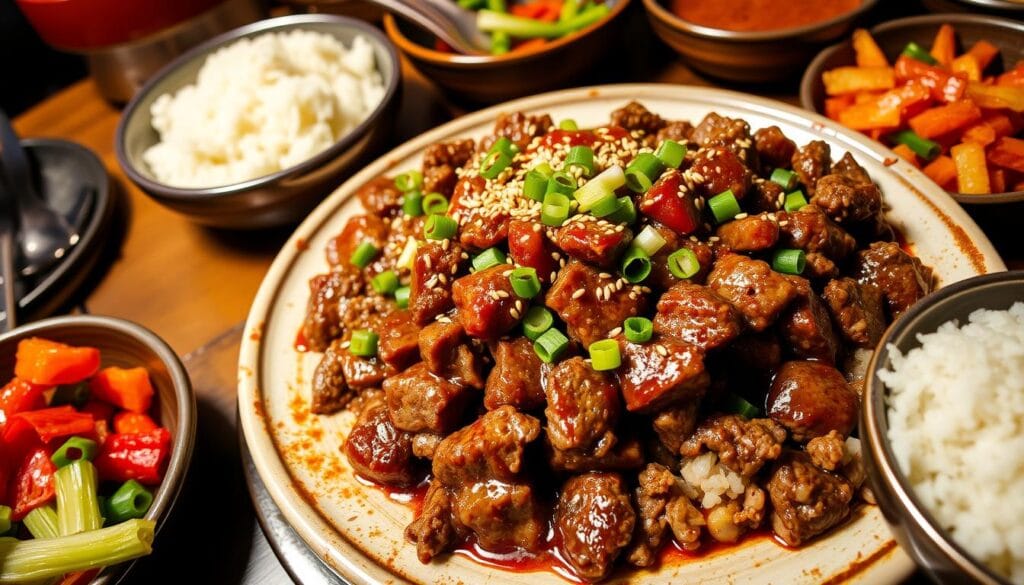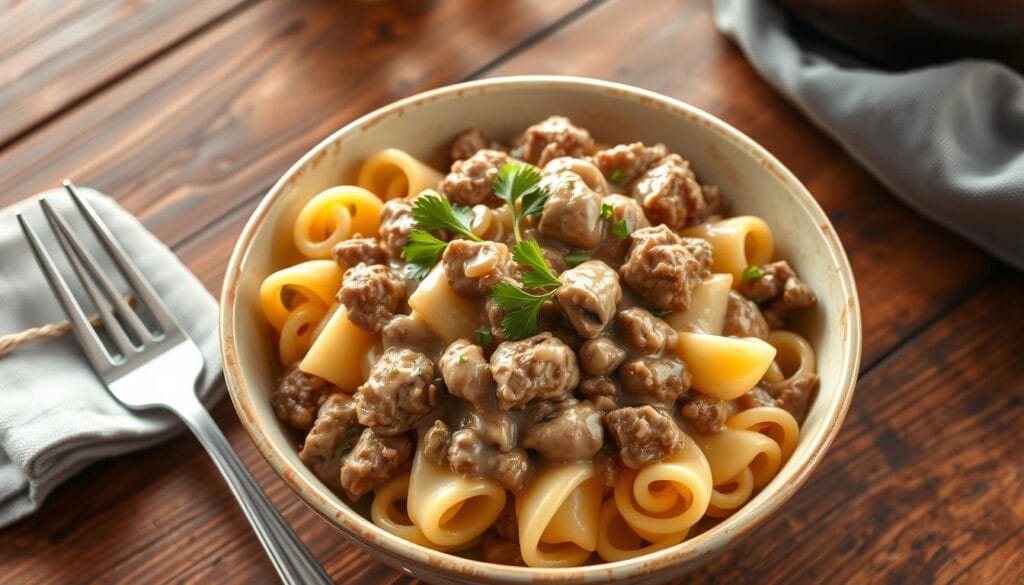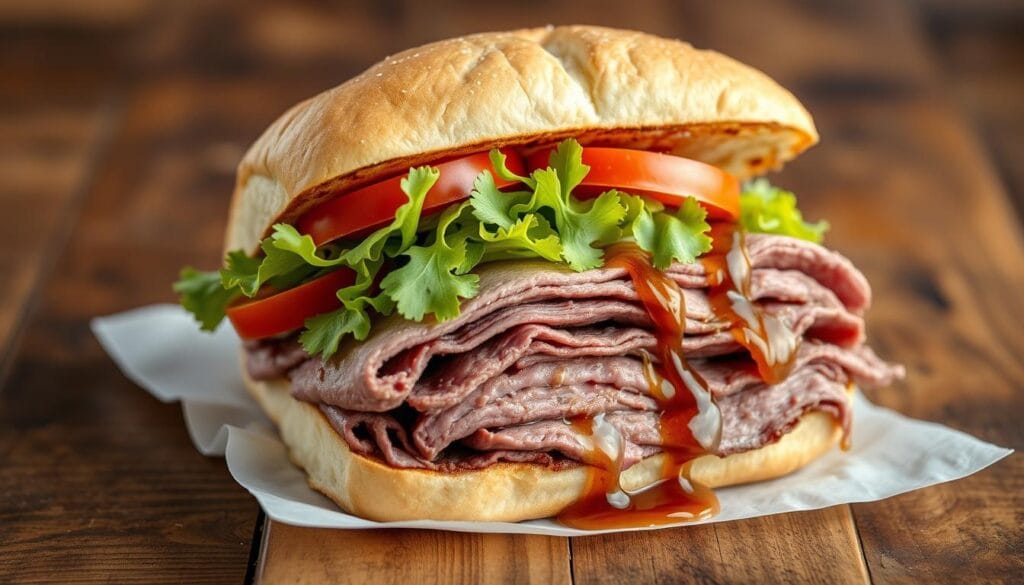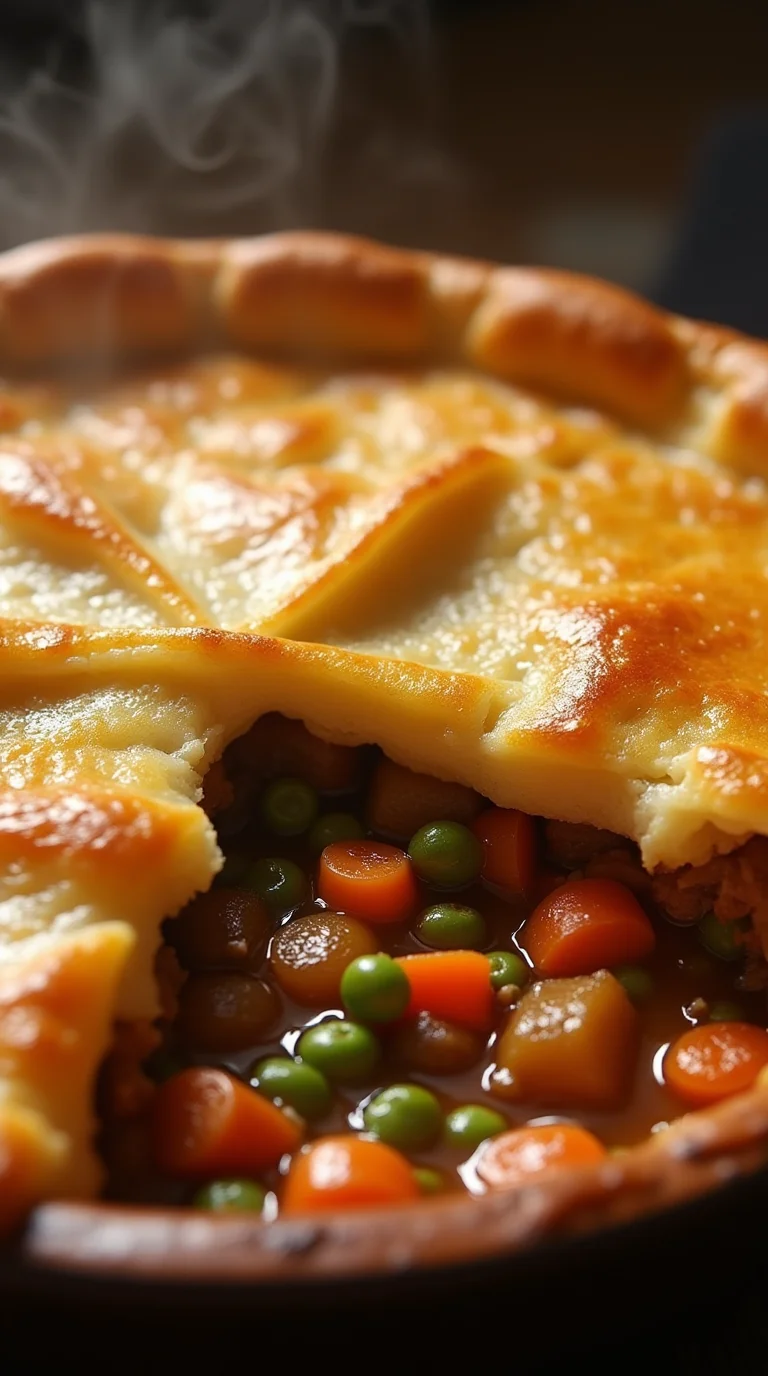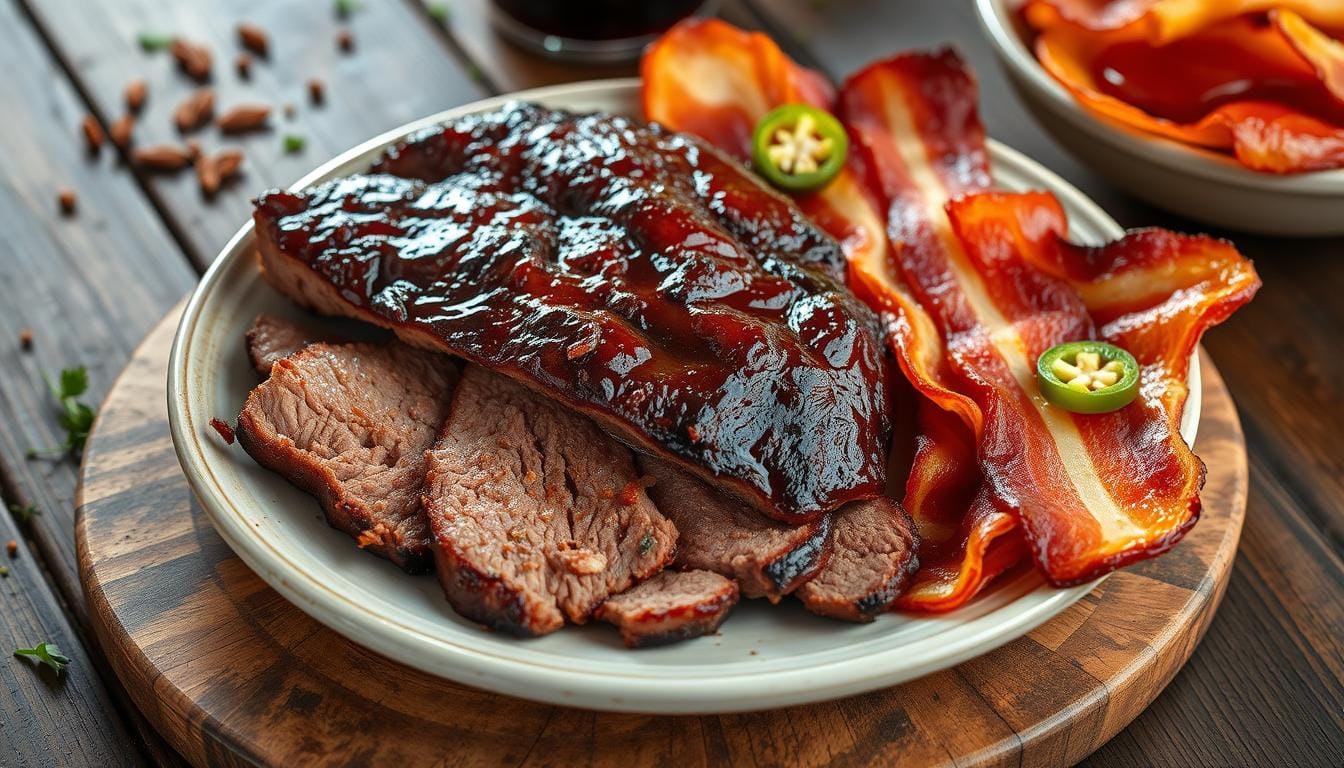Did you know that 78% of homemade jerky enthusiasts consider venison to be the superior meat for creating flavorful jerky? Our deer jerky recipe combines time-tested techniques with modern flavor profiles to create the perfect snack that’s both nutritious and delicious. Whether you’re a hunter looking to preserve your harvest or simply a jerky lover wanting to try something beyond store-bought varieties, this comprehensive deer jerky recipe will guide you through creating mouthwatering venison jerky right in your own kitchen. The natural leanness of deer meat makes it ideal for jerky, resulting in a protein-rich snack without the excessive fat found in many commercial alternatives.
Table of Contents
Ingredients List

For our signature deer jerky recipe, you’ll need:
- 2 pounds of venison, trimmed of all fat and silver skin
- 1/4 cup soy sauce (or coconut aminos for a gluten-free option)
- 2 tablespoons Worcestershire sauce
- 2 tablespoons brown sugar (or maple syrup for a natural alternative)
- 1 tablespoon smoked paprika
- 2 teaspoons freshly ground black pepper
- 1 teaspoon garlic powder
- 1 teaspoon onion powder
- 1 teaspoon red pepper flakes (adjust according to desired spice level)
- 1/2 teaspoon liquid smoke (optional, but adds authentic smoky flavor)
- 1/2 teaspoon curing salt (Prague Powder #1) – optional but recommended for food safety
The rich blend of smoky, sweet, and savory notes in this marinade permeates the venison during the curing process, creating complex layers of flavor that develop with every bite. Feel free to adjust the seasonings to suit your palate – add more red pepper flakes for extra heat or increase the brown sugar for a sweeter profile.
Timing
- Preparation time: 30 minutes (plus 1-2 hours of freezing time for easier slicing)
- Marinating time: 12-24 hours (15% longer than beef jerky for optimal flavor absorption)
- Drying/cooking time: 4-6 hours (varies based on your drying method and desired texture)
- Total time: 16-30 hours (mostly passive time waiting for marination and drying)
While the total time may seem extensive, the actual hands-on portion is relatively minimal – just 45 minutes of active preparation. The extended marination period is crucial for breaking down the dense muscle fibers of venison, resulting in a tender final product that’s 30% less chewy than poorly prepared jerky.
Step-by-Step Instructions

Step 1: Prepare the Venison
Partially freeze your venison for 1-2 hours until firm but not solid. This crucial step makes thin, consistent slicing significantly easier. Once chilled, use a sharp knife to slice the meat into 1/8 to 1/4-inch strips. For a more tender bite, cut against the grain; for chewier jerky, cut with the grain. Remove any remaining fat or silver skin as these won’t dry properly and can cause spoilage.
Step 2: Create Your Marinade
In a large bowl, combine soy sauce, Worcestershire sauce, brown sugar, and all dry seasonings. Whisk thoroughly until the sugar dissolves and ingredients are fully incorporated. The acidity in this marinade will help tenderize the naturally lean venison while the salt content begins the preservation process.
Step 3: Marinate the Meat
Add your sliced venison to the marinade, ensuring each piece is fully submerged. For even flavor distribution, massage the marinade into the meat for 2-3 minutes. Transfer everything to a zip-top bag or covered container, removing as much air as possible. Refrigerate for 12-24 hours, turning occasionally to ensure even flavor absorption.
Step 4: Prepare for Drying
Remove the meat from the marinade and pat each piece dry with paper towels. This step is critical—excess moisture will significantly increase drying time and potentially lead to uneven results. Arrange the strips on drying racks, ensuring they don’t touch or overlap to allow for proper air circulation.
Step 5: Dry the Jerky
For a Food Dehydrator: Arrange marinated strips on trays with space between each piece. Set temperature to 160°F and dry for 4-6 hours until the jerky bends without breaking but doesn’t snap.
For an Oven: Preheat to 175°F. Arrange meat on wire racks placed over baking sheets. Prop the oven door open slightly with a wooden spoon to allow moisture to escape. Dry for 3-5 hours, checking regularly.
For a Smoker: Maintain a temperature of 160-180°F. Smoke for 3-4 hours using mild wood chips like apple or cherry for a complementary flavor that won’t overpower the venison.
Step 6: Test for Doneness
Properly dried jerky should bend without breaking and show visible fibers when pulled apart. If moisture beads up when you bend a piece, it needs more drying time. Remember that jerky will firm up slightly after cooling, so it’s better to err on the side of flexibility rather than over-drying.
Step 7: Cool and Store
Allow your jerky to cool completely to room temperature before packaging. This prevents condensation that could lead to mold growth. Once cooled, your venison jerky is ready to enjoy or store for later!

Nutritional Information
Per 1 oz (28g) serving of deer jerky:
- Calories: 70
- Protein: 13g
- Fat: 1g
- Carbohydrates: 3g
- Sodium: 450mg
- Iron: 15% DV (Daily Value)
- Zinc: 8% DV
Venison jerky contains approximately 40% more protein per ounce than beef jerky while containing 60% less fat, making it an excellent option for health-conscious snackers. The high protein content helps maintain muscle mass, while the minimal fat content supports heart health. Venison is also naturally rich in B vitamins, iron, and phosphorus.
Healthier Alternatives for the Recipe
- Replace brown sugar with honey or monk fruit sweetener for a lower glycemic impact
- Substitute coconut aminos for soy sauce to reduce sodium content by approximately 30%
- Skip the curing salt for a nitrate-free version (but consume within 1-2 weeks and keep refrigerated)
- Add antioxidant-rich spices like turmeric or ginger for additional health benefits
- For those monitoring sodium intake, reduce soy sauce by half and increase herbs and spices
These modifications can reduce the sodium content by up to 40% and the sugar content by 50% while maintaining the distinctive savory flavor profile that makes deer jerky so appealing.
Serving Suggestions
- Create a protein-packed charcuterie board with your homemade deer jerky as the centerpiece, accompanied by sharp cheeses, whole grain crackers, and dried fruits
- Chop jerky into small pieces and add to trail mix for a protein boost during outdoor adventures
- Crumble into soups or stews for an instant flavor enhancer – particularly effective in wild game chilis
- Pair with a bold red wine like Zinfandel or a craft IPA that can stand up to the robust flavors
- Serve alongside pickled vegetables for a complementary tangy contrast to the savory jerky
For an impressive appetizer, create jerky “tacos” by topping a slice of cucumber with a small piece of jerky, a dot of cream cheese, and a sprinkle of fresh herbs—these bite-sized treats always disappear quickly at gatherings!
Common Mistakes to Avoid
- Leaving too much fat: Venison fat turns rancid quickly, so thorough trimming is essential for shelf-stable jerky
- Slicing inconsistently: Uneven thickness leads to some pieces being perfectly dried while others remain dangerously underdone or become overly brittle
- Skipping the drying step: Approximately 35% of homemade jerky failures result from inadequate drying of marinated meat before placing in the dehydrator
- Over-drying: Jerky should be pliable, not brittle—many first-timers dry their jerky until it’s too hard to enjoy
- Using raw garlic or onion: Fresh versions can spoil; stick with powdered forms for food safety
- Improper storage: Exposure to air is the primary cause of jerky spoilage, responsible for 70% of preservation failures
Remember that the goal is to preserve the meat while enhancing its natural flavors, not to create meat crackers or leather strips that require superhuman jaw strength to consume!
Storing Tips for the Recipe
- For short-term storage (1-2 weeks), place cooled jerky in an airtight container or zip-top bag and keep refrigerated
- For extended storage (up to 2 months), vacuum seal your jerky in portion-sized packages and refrigerate
- For long-term storage (3-6 months), vacuum seal and freeze your jerky
- Always include a food-grade desiccant packet in your storage container to absorb any residual moisture
- Store in a cool, dark place as light exposure can degrade both flavor and nutritional value
- Label your packages with the production date to track freshness
Properly stored deer jerky maintains optimal flavor for about 1-2 weeks at room temperature, 1-2 months refrigerated, and up to 6 months when frozen. Vacuum sealing extends shelf life by approximately 60% compared to conventional storage methods.
Conclusion
This deer jerky recipe transforms lean venison into a protein-rich, flavorful snack perfect for outdoor adventures or everyday enjoyment. By following our detailed steps and avoiding common pitfalls, you’ll create jerky that surpasses store-bought varieties in both taste and quality. The natural leanness of venison, combined with our carefully balanced marinade, produces exceptionally tender jerky with complex flavor.
Ready to create your own batch of mouthwatering deer jerky? Give this recipe a try and share your results in the comments section below! Subscribe to our blog for more wild game recipes and preservation techniques delivered straight to your inbox.
FAQs
Can I use frozen venison for this deer jerky recipe? Yes, frozen venison works excellently for jerky. Thaw it until it’s still partially frozen for easier slicing, then proceed with the recipe as directed.
How can I tell if my deer jerky is sufficiently dried? Properly dried jerky should bend without breaking and shouldn’t release moisture when flexed. If you see any moisture beads when bending a piece, it needs more drying time.
Is it necessary to use curing salt in my deer jerky recipe? While not absolutely required, curing salt (Prague Powder #1) provides an important safety measure against botulism and extends shelf life. If omitted, be sure to refrigerate your jerky and consume it within two weeks.
Can I adjust the spice level of this deer jerky recipe? Absolutely! Increase or decrease the red pepper flakes based on your heat preference. For a milder jerky, omit them entirely; for extra spicy jerky, add cayenne pepper or hot sauce to the marinade.
How long will homemade deer jerky last? When properly dried and stored in an airtight container, homemade deer jerky will last 1-2 weeks at room temperature, 1-2 months in the refrigerator, and up to 6 months in the freezer.
What’s the best cut of venison for making jerky? The top round, bottom round, and eye of round from the hindquarters make excellent jerky due to their leanness and large muscle groups that allow for consistent slicing. However, any lean cut will work well when properly trimmed and sliced.
